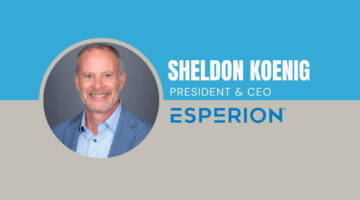
It is perhaps still underappreciated the incredible breakthrough that GLP-1s and the related class of drugs represent. For the first time, Americans with obesity and its linked comorbidities stand to benefit from treatments that offer potentially life-changing outcomes not only for their weight but also their cardiometabolic health. Indeed, new real-word evidence and clinical trials continue to reveal even more benefits of these treatments on an ongoing basis.
While the promise of GLP-1s is clear, the broad and rapid adoption of these treatments has raised important questions about confronting weight stigma and bias in our society, expanding insurance coverage for obesity treatment, and accounting for the costs of doing so. Further, unprecedented demand and supply constraints have forced patients and our healthcare system to reckon with persistent supply shortages. There remains much work to be done in order to recognize the full potential of GLP-1s.
Another hurdle to doing so has gone largely unaddressed: scaling care delivery. How can we rise to the challenge of delivering high-quality care to the 100 million Americans living with obesity?
Much like the supply and demand that keeps these medications out of stock at the pharmacy, there’s a shortage in the most essential resource needed to deliver care: providers. Estimates say the United States will face a deficit of more than 80,000 physicians by 2036. Our population is aging and, with more than 40% of physicians age 55 or older, many are headed for retirement in the near future. Further, while the number is thankfully growing, today there are only a little more than 8,000 board-certified obesity specialists across the country. As we inch closer to 50% of Americans living with obesity, this math just doesn’t check out.
Delivering access at scale
Already, patients seeking care face an average wait time of 26 days for doctor’s visits, and that can climb much higher for obesity specialists who routinely have many months long wait lists. Those wait times are already the status quo while people with obesity have historically turned to diet, exercise, and other lifestyle efforts to lose weight rather than seeking care from a medical provider. With so many now seeking GLP-1 treatment, we must find ways to help providers care for more patients. Technology is the key to unlocking this capacity.
One such example of technology helping providers to efficiently deliver care and spend time focused on each patient’s unique needs is asynchronous visits and messaging. When patients seek care via many telehealth platforms the process often starts with an asynchronous visit and a dynamic, condition-specific intake. These intakes often prompt and guide them through providing a full breath of their medical history, symptoms, and health goals. Rather than collect this synchronously, providers can remain focused on other patients or tasks while a patient completes their intake. Then, once turning their attention to the new patient, the provider starts off with a comprehensive picture of that patient’s needs and can spend time following-up about individualized questions, treatment options, and help that individual determine the best next steps in their care journey.
In the case of obesity, many patients come to providers having already spent years trying to manage their weight through several intervention methods and with lots to share about how the condition affects their lives. These long, complex medical histories aren’t suited for short, rushed office visits, when a patient or provider could inadvertently forget to report or ask something. Instead, asynchronous visits enable providers to be powerful ‘historians’ because: patients have time to share all of their detailed history, it’s collected in a standardized way every time so nothing gets overlooked, and it’s structured so that providers can thoroughly review it.
Assuring quality and safety
There’s no doubt that the U.S. healthcare system can deliver exceptionally high-quality care. Scaling that experience introduces more challenges though. Given the need to increase the number of patients that providers can care for, we must do so in a way that doesn’t compromise on the quality and safety of that care. Relatedly, we cannot risk worsening the burden that has caused high rates of burnout among clinicians.
Contrary to worries of the past, technology is best suited not to replace providers but in many ways to empower them to the best of their abilities each and every time they care for patients. Technology can add layers of automated safety checks and quality assurance. For instance, telehealth platforms can use automated tools to surface the right patient information and offer timely reminders to providers as they evaluate a patient’s needs. Technology can flag key pieces of information in a patient’s medical history for providers to dig into or to check a patient’s existing medication regimen against a provider’s recommended treatment to alert them about any possible drug-to-drug interactions.
Dealing with side effects is another key measure of quality, and one that is particularly relevant as patients initiate and titrate to maintenance doses of GLP-1 medications. In order to best help patients, providers need to know about possible side effects in a timely manner. That’s difficult if patients are expected to schedule an in-person visit, but easier when they have a patient portal that enables easy, any time side effect reporting. Technology’s ability to expand access and structure side effect reporting can help providers to stay on top of their patient’s treatment and respond accordingly – which is important to supporting adherence and the best possible outcomes for those on GLP-1s.
Supporting continuity of care
One of the biggest challenges to scaling obesity care is continuity of care. As discussed, access to care is limited in our system. Inherently, the management of chronic disease calls for ongoing, frequent engagement with providers, nurses, and/or health coaches. This combination means that it’s hard for patients to reliably access and providers to deliver this kind of care for any chronic condition, let alone one with obesity’s massive scale.
This is another place where technology’s ability to free care delivery from the structural and time limitations of in-person visits is beneficial. Technology can offer more diverse means of patient engagement that can be tailored to the use case and individual’s needs. In practice, this might mean a patient messaging their provider when they have one quick question at night. It could include using wearable or connected devices to help a provider monitor a patient’s progress over time. Or it might include an educational curriculum delivered via on-demand content and videos as part of a treatment plan. So much of what determines treatment progress and outcomes happens outside of visits, and technology lets providers more regularly engage with patients there – while maintaining time for more in-depth appointments when appropriate.
Novo Nordisk and Eli Lilly have indicated that it will take time to ramp up production to the necessary doses of GLP-1 medications. The reality is that so too will building the care capacity for 100 million people with obesity. But we owe it to patients to get to work, because only by pairing these GLP-1s with appropriate provider support can we unlock a new era in obesity care. Embracing the role that technology can and must play in obesity care is the first step in reaching that goal.
Photo: aykut karahan, Getty Images
Dr. Melynda Barnes is responsible for Ro’s clinical strategy as well as quality and patient safety initiatives. She also shapes the company’s proprietary EMR and technology tools offered to providers, and supports the development of new health and wellness products offered to patients. In addition, Dr. Barnes leads Ro’s nationwide network of affiliated providers and clinicians, designing and supporting clinical frameworks that allow providers to deliver the highest quality of care.
This post appears through the MedCity Influencers program. Anyone can publish their perspective on business and innovation in healthcare on MedCity News through MedCity Influencers. Click here to find out how.










